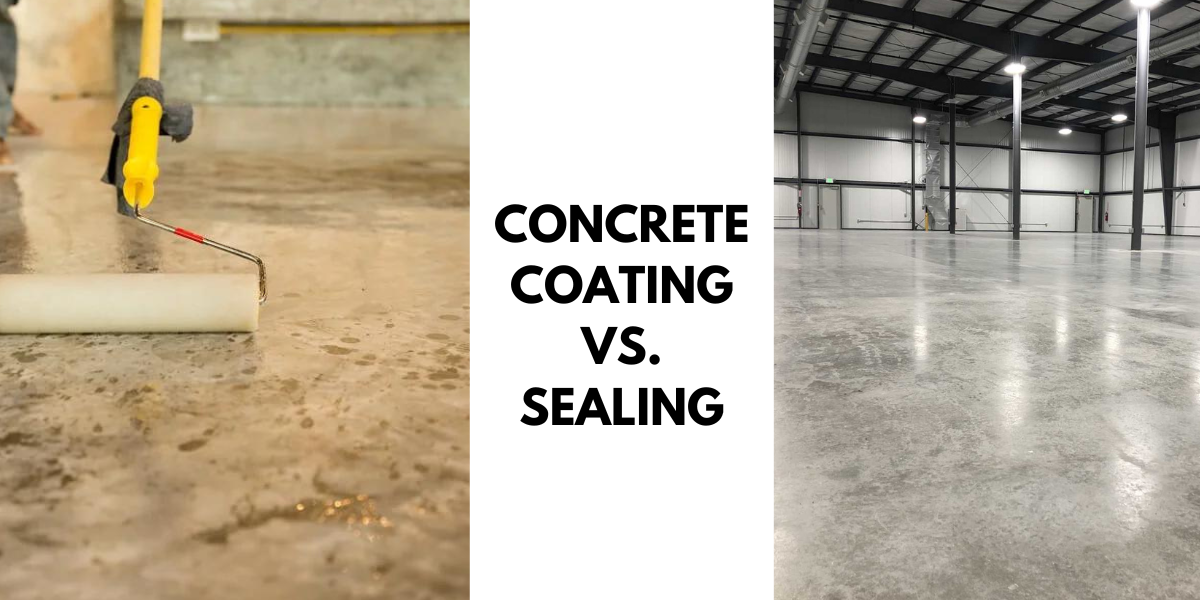Blog and News
Concrete Coating vs. Sealing – Explore the Differences!

A majority of commercial facilities and warehouses prefer polished concrete flooring over other floor covering options. Not just because these are affordable, airy, versatile, and easy to clean. But also due to its sustainability, warmer tones, texture, and antique shades. However, it is essential to take protective measures in order to ensure long-term durability, effectiveness, and aesthetically appealing appearance.
Concrete coating and sealing are the two safety practices required to maintain the quality of concrete surfaces. By performing a series of steps, you can enhance the longevity and performance of these floors. While these two terms are often used interchangeably, you should learn that they serve different purposes and offer distinct benefits.
Let’s explore the blog to understand the differences between concrete coating and sealing. Indeed, it will help make an informed decision on this.
Concrete Coating
Do you know the global concrete floor coating market was estimated at USD 4.7 billion in 2022 and is expected to hit USD 7.2 billion by 2030? The massive hike in its market size itself shows the impact of floor coating on concrete surfaces.
Concrete surfaces are usually dull and boring. Hence, you need a proper floor coating to enhance the aesthetic appeal of these surfaces and offer an extra layer of protection. Undergoing this measure, you can enjoy –
- Improved durability
- Chemical resistance
- UV resistance
- Enhanced aesthetics
Now, coming to concrete coating materials, these usually involve epoxy, polyurethane, acrylic, and other resins. No matter what you choose, you can easily customize these coating products with different colors and additives to achieve the desired look.
Concrete Sealing
Similar to concrete coating, the global market size of concrete sealing materials was valued at USD 305.5 million in 2022. With a CAGR of 5.7%, the market value is expected to hit USD 425.6 million by 2028. This exponential rise showcases the trend of using sealing materials for concrete surfaces.
Concrete floors are porous and permeable. Hence, these allow water particles and soluble contaminants to penetrate the surface and accelerate degradation. Some common examples of surface damage are laitance, efflorescence, spalling, and cracking.
Concrete sealing can protect your concrete surface from any mild to a serious damage. Instead of paying attention to the aesthetics, it prevents moisture penetration, staining, and surface damage from environmental factors. Quality benefits it offers include –
- Water-resistance
- Scratch resistance
- Stain resistance
- Enhanced longevity
Sealers like silicates and siloxanes are usually applied on the surface. These materials penetrating the concrete surface create a protective barrier on it.
Conclusion
Polished concrete flooring can be an excellent choice for a garage floor or any commercial floor. But, of course, you need to undergo coating or sealing on these surfaces to maintain their quality standard.
Now, it is essential to understand the surface and the product material before you go for concrete sealing or concrete. Sealwell performs the job with perfection. Initially, our skilled flooring contractors examine the surface condition. Based on their analysis, they help clients choose the right flooring solution for their commercial facilities.
Excited to know more? Call us today.

















































